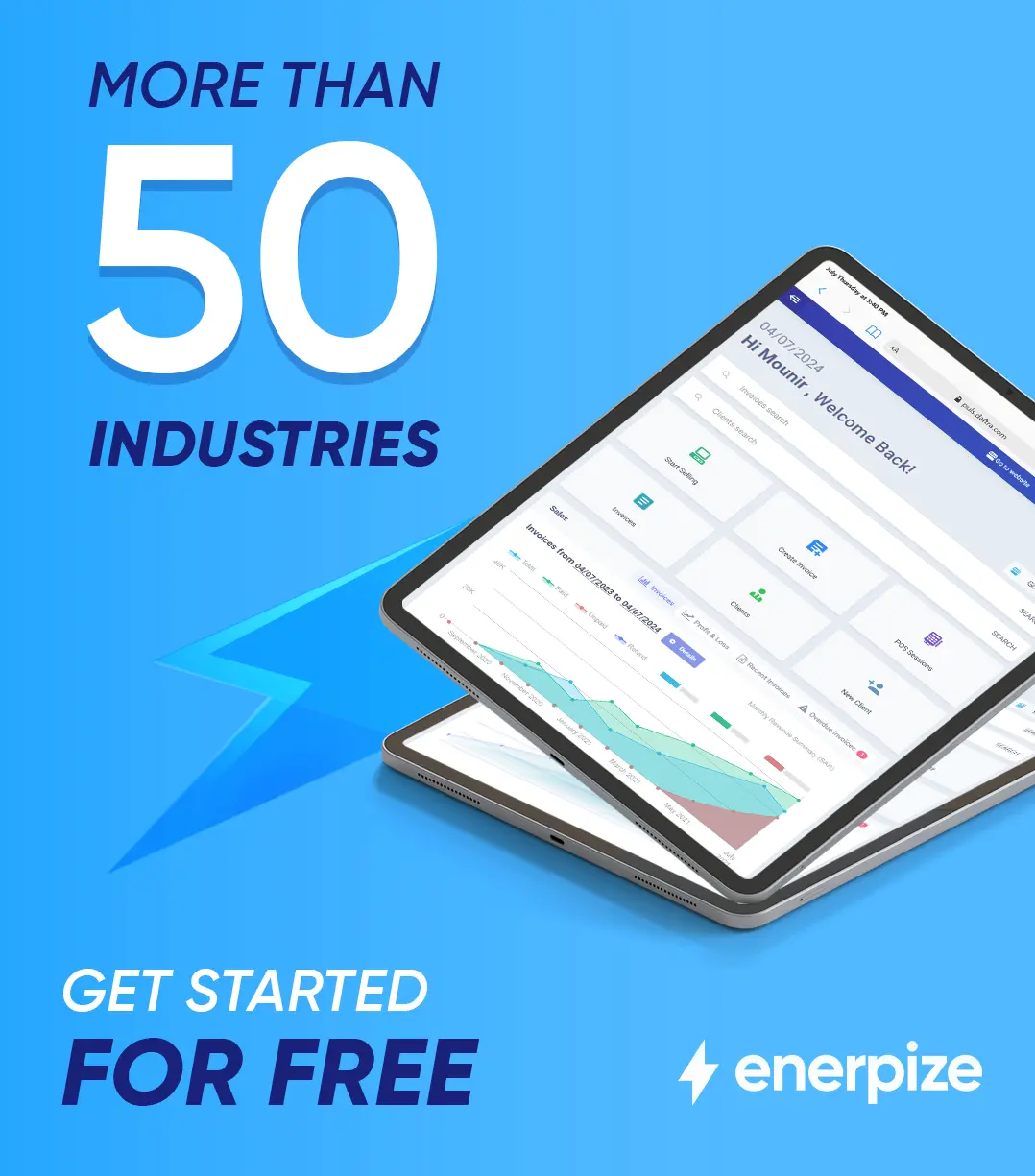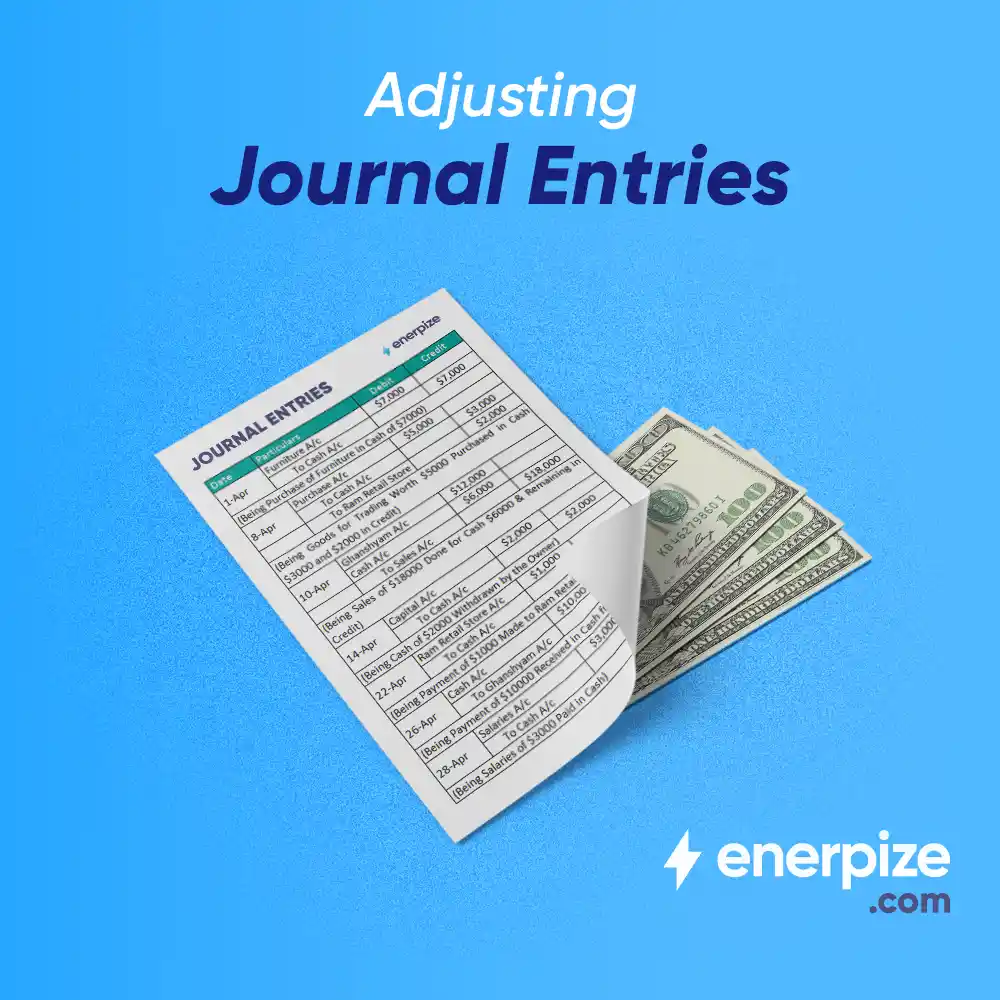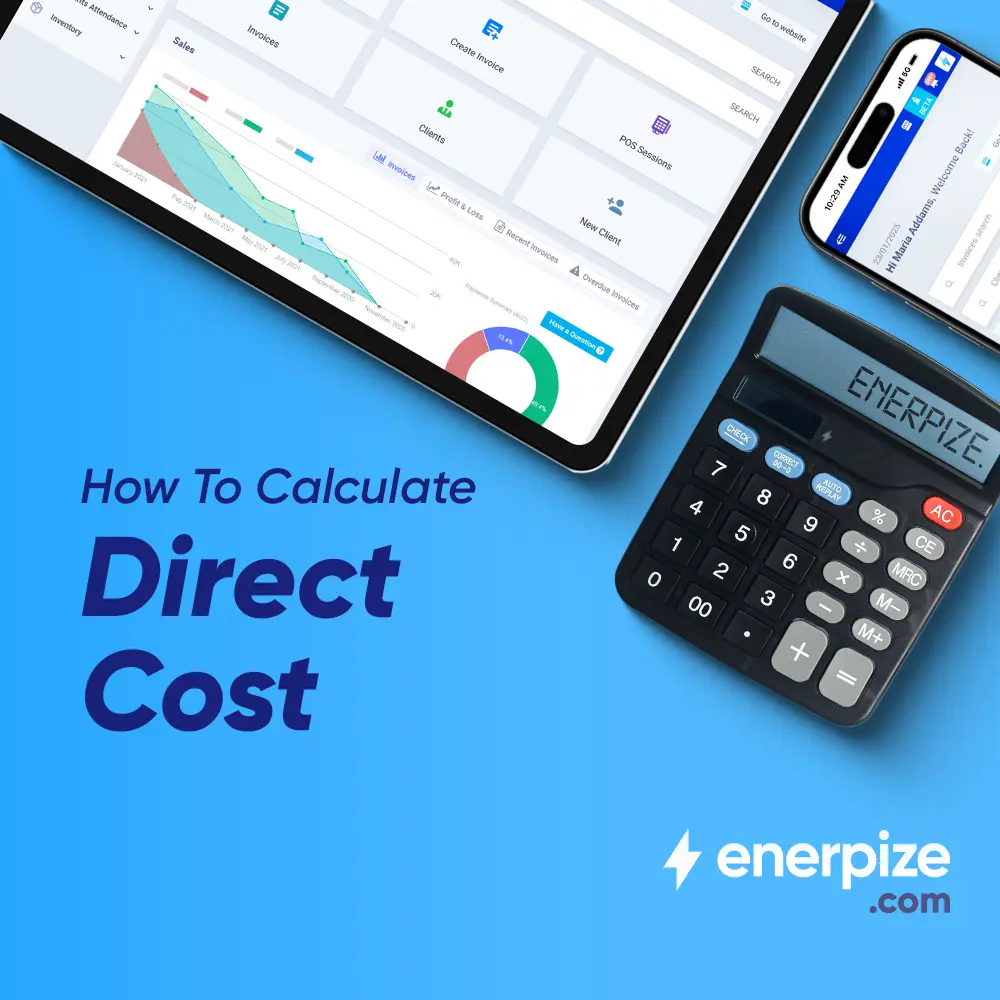Author : Mohamed Tantawy
Reviewed By : Enerpize Team
General Ledger in Accounting: Meaning and Importance
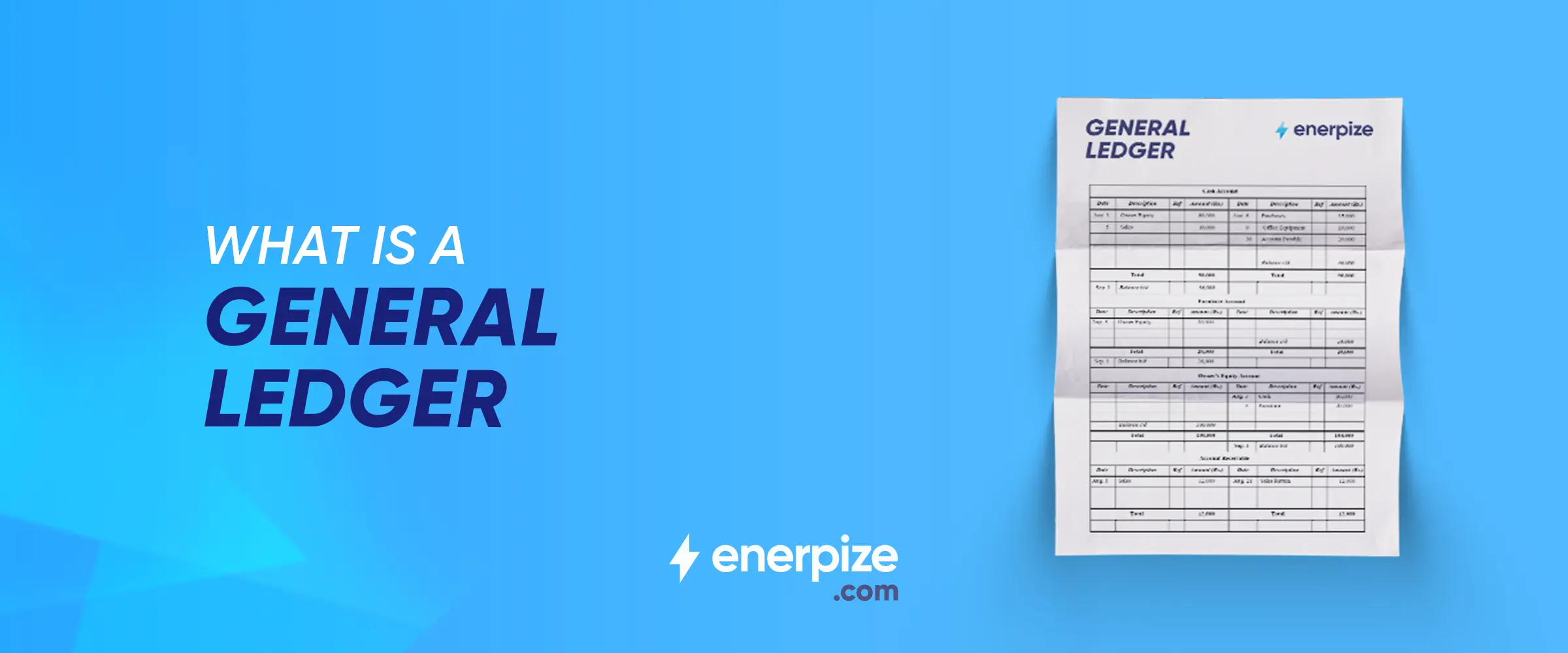
Table of contents:
- What Is A General Ledger In Accounting?
- Importance of General Ledger For Businesses
- Types Of General Ledger Accounts
- How General Ledger Works?
- How To Create A General Ledger?
- What Is A General Ledger Reconciliation?
- General Ledger Example
- General Ledger And Other Financial Statements
- Streamline General Ledger With Enerpize
- Final Thoughts
The general ledger is a master accounting document in which all accounting information is recorded and reconciled for financial planning and management, regulatory purposes, and more. Every cent not accounted for correctly is a business loss or damage with broad, long-run financial consequences.
Every business has different accounting needs and requirements. Understanding how general ledgers work first is essential to streamlining accounting operations. This post summarizes what every business owner or executive manager needs to know about general ledger meaning and reconciliation, examples and account types, subledgers, and more.
Key Takeaways
- The general ledger is the foundation of accounting, recording every financial transaction across core accounts such as assets, liabilities, equity, revenue, and expenses. It serves as the central source for tracking all company finances.
- General ledger offers a complete view of financial activity, making it easier to track trends, spot issues, and make informed decisions based on accurate data.
- By following the double-entry system, the general ledger ensures that every debit has a matching credit. This built-in check keeps records balanced and helps prevent accounting errors.
- The ledger organizes financial data in a structured format, simplifying tax reporting and ensuring accurate information is available when preparing statements or undergoing audits.
- Ledger entries are grouped into account types, like revenue or expenses, helping businesses understand where money comes from and where it goes.
- The general ledger feeds into major financial reports such as the income statement and balance sheet, making it central to financial planning.
- Subledgers provide detailed records, like for vendors or inventory, that roll into the general ledger for better organization and accuracy.
What Is A General Ledger In Accounting?
A general ledger in accounting is a detailed record of all financial activities of a given business, of whatever size and in whatever form. A general ledger is an umbrella account under which several sub-accounts, such as assets, liabilities, equity, revenues, and expenses, fall under.
As such, a general ledger is not merely a record-keeping document of all past, ongoing, and future financial activities. It forms a financial planning, reporting, and auditing foundation. In short, general ledgers ensure a company’s financial activities are up-to-date, robust, and compliant.
Then again, general ledgers serve essential accounting functions, which merits a separate discussion of why general ledgers are crucial for businesses anywhere.
Importance of General Ledger For Businesses
The importance of general ledgers for businesses cannot be overstated. There are too many benefits companies stand to gain from having a general ledger to list, but here are some significant benefits that have been proven, regardless of industry, geography, or scope:
- Integrated Financial Overview. Having all transactions in one place gives business owners and executive managers a bird-eye view of each transaction in each ledger account. This integrated approach to accounting management provides businesses with invaluable insights to identify financial pain points to act on and, perhaps more importantly, make informed financial decisions to achieve operational excellence.
- Ensuring Transaction Accuracy. This goes hand in hand with having everything in one place. That is, when you, as a financial controller or planner, have all your financial activities curated into a centralized document, you stand to gain several accounting benefits, such as:
- Minimizing chances for fraud, duplication, or human error
- Rewarding staff, customers, or business partners based on accurate information
- Enhancing cash flow management clarity by being better able to manage inflows and outflows
- Optimizing Internal Control. This should be a no-brainer. Having a centralized, transparent, and accurate general ledger is a Holy Grail to have a better tap on internal financial controls.
- Expediting Tax Reporting. A general ledger is a vital document that consolidates all income and expenses. Every accountant and financial controller knows. Still, a general ledger also serves as an indispensable reporting document for various regulatory purposes, not least taxation.
- Providing Actionable Insights. This is - or should be - a no-brainer. Having a detailed and integrated ledger to account for all financial transactions offers many benefits beyond accounting per se, including:
- Informing company decision-makers about general business pain points to address
- Responding resiliently to financial meltdowns and economic downturns
- Leveraging business potential by improving on certain financial performance issues
Types Of General Ledger Accounts
As noted, a general ledger is a master accounting document of all financial transactions at a given business. The general ledger is, as such, a generalized account of subledgers, aka ledger account, in which journals of specific accounts are kept.
For current purposes, seven general ledger accounts are discussed:
- Asset Accounts
- Liability Accounts
- Equity Accounts
- Operating Revenue Accounts
- Operating Expense Accounts
- Non-Operating Revenue Accounts
- Non-Operating Expense Accounts
Asset Accounts
An Asset Account is a record of a company’s assets. Intuitively, asset account value increases with every asset added to a company’s records. Generally, assets come in different classes. Here is an exhaustive list of some standard asset classes usually debited to asset accounts as capital expenditures:
- Accounts Receivable
- Intangibles (e.g., copyrights, patents, licenses, etc.)
- Tangibles, aka Property, Plant, and Equipment (PP&E)
- Notes Receivable
- Inventories (e.g., machinery and equipment, office furniture, artwork, fleet vehicles, etc.)
- Investments (e.g., bonds, cash, mutual funds, derivatives, annuities, etc.)
And more.
Liability Accounts
A Liability Account records all debts a company owes. Liabilities come in one form of debit-to-liability when a business owes within permissible amounts or a second form of credit-to-liability when a business owes beyond allowable amounts.
As with assets, liabilities come in many forms and mirror asset accounts mentioned above, although on a debit or liability side. Here are some examples:
- Accounts Payable
- Notes Payable
- Loans Payable
- Accrued Liabilities
- Interest Payable
- Deferred Revenue, aka Unearned Revenue
- Income Tax Payable
And more.
Equity Accounts
An Equity Account records a company's overall value minus all liabilities. Put differently, equity accounts represent shareholder value or interest in a company after debiting all liabilities. Examples are several, including:
- Stocks: Common, Treasury, and Preferred
- Stock Options
- Dividends Payable
- Retained Earnings, i.e., earnings reported as dividends
- Earnings Per Share
Operating Revenue Accounts
An Operating Revenue Account records a company’s overall cash inflows generated from primary business activities such as direct sales and is reported top-left of the balance sheet. Operating Revenue Accounts are particularly important for generating insights into which income-generating activities drive earnings and when. Examples are many across industries, including:
- Sales
- Commissions
- Fees:
- Service (e.g., Consulting)
- Licensing
- Franchise
- Royalty
- Patenting
- Subscription
Operating Expense Accounts
An Operating Expense Account records all company costs or expenses incurred while doing business. Think of Operating Expense Accounts, for simplicity, as an account of a household’s expenses kept by a housewife. Examples of Operating Expense Accounts are just as straightforward, including:
- Payroll
- Stationary
- Premiums
- Cost of Goods Sold (COGS)
- Marketing & Advertising
And more.
Non-Operating Revenue Accounts
Unlike an Operating Revenue Account, a Non-Operating Revenue Account is a record of non-core or indirect income-generating activities. Typically, big companies have much more lewy to generate indirect income from various activities. The U.S. Big Tech - Alphabet, Amazon, Apple, Meta, and Microsoft - for example, reap huge revenues from non-core business activities. Consider Apple. According to the U.S. Securities and Exchange Commission,
The Company [Apple] also employs a variety of indirect distribution channels, such as third-party cellular network carriers, wholesalers, retailers and resellers. During 2019, the Company’s net sales through its direct and indirect [emphasis added] distribution channels accounted for 31% and 69% [emphasis added], respectively, of total net sales.
So, established businesses can still generate huge revenues without even doing more business or investing in new business expansion ventures. Examples of Non-Operating Revenue Accounts are many, including:
- Asset Sales
- Royalties
- Currency Exchange
- Leasings
- Dividends
- Interests
And more.
Non-Operating Expense Accounts
A Non-Operating Expense Account is, similar to a Non-Operating Revenue Account, although on debit side, a record of all expenses a company incurs from non-core business activities. Examples are similar to corresponding Non-Operating Revenue Accounts examples, including:
- Interests
- Asset Loss
- Currency Exchange Loss
- Write-Offs
- Unplanned Expenses (e.g., premium hikes; security and natural disaster emergencies)
And more.
How General Ledger Works?
The general ledger works according to modern accounting's double-entry system, in which business expenses and revenues are entered or recorded as debit or credit. The straightforwardness of such a system makes managing all business expenses and revenues a matter of balance. That is, an established accounting equation needs to be fulfilled:
Assets = (Liabilities + Shareholder Equity)
[Credit (CR)] [Debit (DR)]
That being said, ledgers may not be kept as should be. Indeed, creative accounting practices exemplify how deliberate mismanagement of accounting records is performed to evade regulatory oversight or accrue gains unreported to tax authorities.
How To Create A General Ledger?
Creating a general ledger is a straightforward process:
- Journal transactions upon occurrence.
- Nest each transaction under a relevant account as accounts payable, royalties, asset sales, etc.
- As and when required, reconcile your entries in each sub-ledger (more about reconciliation in a bit).
- Once reconciled, export your sub-ledger entries to your general ledger.
Download Now: General Ledger Template
What Is A General Ledger Reconciliation?
The reconciliation process is an “early internal auditing” process where one set of records is compared against another. Put differently, financial records of business transactions in a given account, of whatever type, are matched against corresponding general ledger entries. The obvious reason for any reconciliation process is to ensure all anomalies are eliminated, all entries match in compared accounts, and all unusual journaling activities are adequately identified and addressed.
Externally, early and solid general ledger reconciliation ensures you avoid any unpleasant regulatory surprises should any of your journals not be correctly recorded and reported.
Download Now: General Ledger Reconciliation Template Excel
General Ledger Example
The general ledger structure is straightforward: a debit column on the left and a credit column on the right. Intuitively, general ledgers include core components of:
- Account Designation & ID. This is to identify and retrieve accounts instantly.
- Debit & Credit Columns. These are columns assigned to record all debit and credit transactions on the left and right sides, respectively.
- Transaction Details. This is to include all relevant transaction details in each account type, such as description, date, and link to a source journal entry.
To get a sense of what a general ledger looks like, here is one example:
To create a general ledger table, you would typically organize the information in a structured way that tracks all the financial transactions for a business. A general ledger includes account names, dates, transaction descriptions, debits, credits, and balances.
Here is one example:
| Date | Account | Description | Debit | Credit | Balance |
| 2024-01-01 | Cash | Opening Balance | 5,000 | 5,000 | |
| 2024-01-05 | Accounts Payable | Paid Supplier Invoice | 1,000 | 4,000 | |
| 2024-01-10 | Sales Revenue | Product Sale | 2,500 | 6,500 | |
| 2024-01-15 | Expenses | Office Supplies | 500 | 6,000 | |
| 024-01-20 | Accounts Receivable | Customer Payment Received | 3,000 | 9,000 |
Read Also: How To Pass Opening Entries in Accounting
General Ledger And Other Financial Statements
As noted, a general ledger records all financial transactions at a given company according to a double-entry system and uses a credit/debit equation in which both sides must be balanced. Transactions are journaled in each subledger and recorded manually in a company’s general ledger or using an automated system.
Having a generalized overview of all transactions enables financial controllers, accountants, and management to generate a wide range of financial reports, including a trial balance (explained in a bit), balance sheet, income statement, cash flow statement, shareholder equity statement, etc. Put differently, a company’s general ledger acts as a “data pool” of all transactions, which relevant accounting staff can pull from to generate custom financial statements and reports.
The general ledger, as such, serves a critical function in financial control: an ultimate point of reference to cull, audit, or match financial data against generated financial statements to ensure any future financial planning or auditing efforts are performed correctly and compliantly.
Subledger VS General Ledger
Simply put, where a general ledger is, by definition, a general account of all transactions journaled into one document, a subledger is a financial data subset journaled to reflect transactions performed in one example of our seven above-mentioned general ledger accounts.
For example, a bank account subledger records all bank-related transactions such as withdrawals, wires, reconciliations, deposits, etc. Examples of subledgers follow a similar logic and include account payable subledger, inventory subledger, cash subledger, etc.
In contrast to general ledgers, subledgers provide a more granuailzed view of specific financial transactions for more enhanced financial controls and management.
Read more: General Ledger VS Subledger: A Comprehensive Guide
Trial Balance VS General Ledger
In essence, whereas a general ledger is an ongoing account of every financial transaction at a company, a trial balance is, by definition, a trial, a test, a worksheet, or a “dress rehearsal” of all balances in a given reporting period to ensure no mathematical errors exist.
Trial balances - used only internally and deemed informal compared to balance sheets (explained in a bit) - do not follow strict recording or auditing conventions. Generally, trial balances fall into three classes:
- Unadjusted trial balance
- Adjusted trial balance
- Post-closing trial Balance
The unadjusted trial balance is, by definition, an on-the-go balance that includes daily, unscrutinized transactions. The adjusted trial balance is a scrutinized version of an unadjusted trial balance where journaled entries are verified to ensure all entries in all transactions are correct. The post-closing trial balance shows a next-year trial balance after completing all current-year entries.
For More: Key Differences between General Ledger and Trial Balance
Income Statement And General Ledger
The general ledger is, once again, a generalized, ongoing account of all accounts at a company. As such, general ledgers include everything, including income-related transactions. That means general ledgers record accounts corresponding to journaled income statement and balance sheet entries.
Conversely, an income statement includes, or might include, consolidated amounts of income and expenses pulled from the general ledger, including entries for income such as investments (e.g., cash, derivatives, bonds, etc.), accounts receivable, and inventory (e.g., equipment, furniture, etc.); and entries for expenses such as premiums, advertising, etc.
Balance Sheet And General Ledger
The fundamental difference between a balance sheet and a general ledger is that, whereas balance sheets are final, audited, and reportable documents that include all financial transactions within a given reporting date, general ledgers are ongoing, constantly adjusted, and continually audited documents that contain all financial transactions indefinitely.
As such, balance sheets are vital for a wide range of stakeholders, particularly shareholders and investors, to assess a company’s overall financial position and health. Meanwhile, general ledgers act, as noted, as general financial data pools from which specific datasets are pulled to generate all sorts of statements, sheets, and reports.
Streamline General Ledger With Enerpize
At Enerpize's online accounting software, we provide an integrated, automated, and user-intuitive solution for all your accounting management needs. As you may have learned, managing accounting activities could be overwhelming or damaging without an adequate accounting management system.
Enterprise end-to-end accounting solution enables you to:
- Track and manage expenses and income anywhere, anytime - by assigning billable expenses and forwarding invoices to customers.
- Generate PL&L reports - by displaying your overall revenue, expenses, and net income and calculating your net profit.
- Set up multiple tax options - by defining tax requirements (e.g., GST, VAT, EXP, etc.) monthly, quarterly, or annually according to mandated laws and regulations in each jurisdiction.
- Create cost centers - by calculating profitability on a product or department basis so you can control your overall costs.
- Create charts of accounts - by listing all your accounts, which you then make available for recording transactions in your general ledger.
- Generate ledger reports - by providing a complete record of all financial transactions so you can prepare financial statements.
- Manage assets - by developing, operating, maintaining, upgrading, and disposing of assets cost-effectively so you can improve asset acquisition.
- Track your staff expenses by monitoring each cent added or subtracted by your staff so you can generate detailed and customizable expense reports per staff member, department, or companywide.
And more.
Give our integrated accounting solution a try, and let us know how we can help you with your accounting needs.
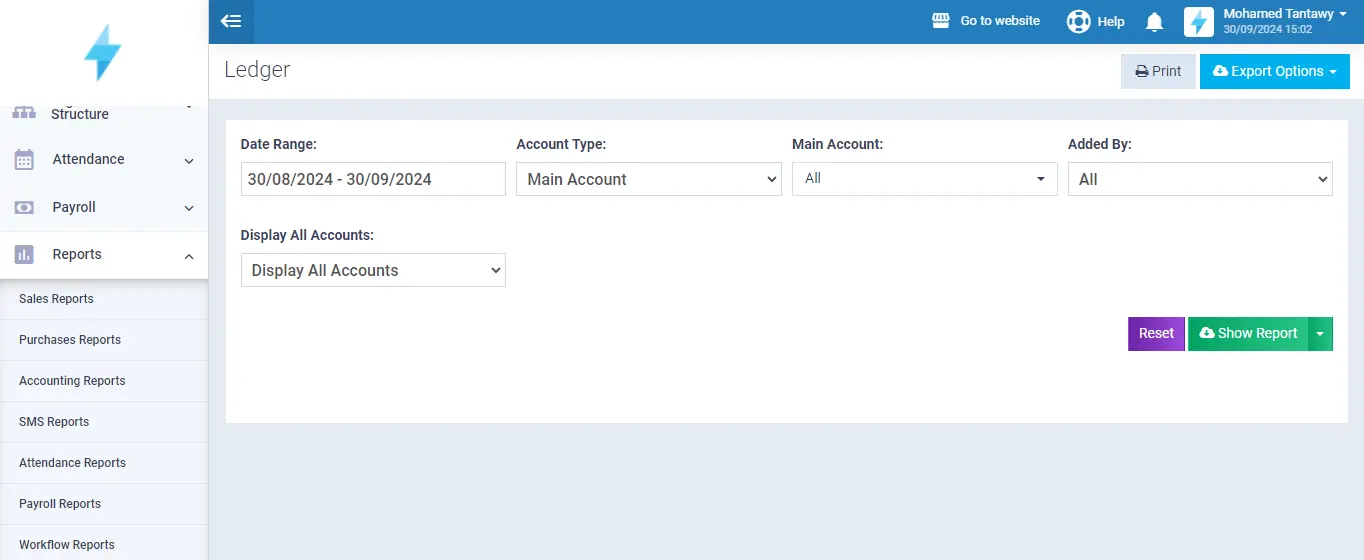
Final Thoughts
Companies, big and small, constantly need to manage accounting activities efficiently, quickly, and compliantly. To do so, learning about fundamental accounting concepts - first of all - is a must.
The general ledger is a concept that business owners, executive managers, and entrepreneurs must fully understand to maximize ROIs in accounting, financial management, and beyond.
This post explains what a general ledger is, how it works, and why having a complete record of all your financial transactions is essential. Further, a detailed explanation of relevant ledger-related concepts - including types of general ledger accounts, subledgers, trial balances, income statements, and balance sheets - is provided.
Managing your accounting activities and accurately identifying your accounting needs should not be left to chance or unpleasant regulatory surprises.
Carefully choose your accounting management system to achieve unmatched accounting management performance, be educated in-depth, and derive invaluable insights about everything accounting.
General Ledger is easy with Enerpize.
Try our accounting module to create general ledger easily.

